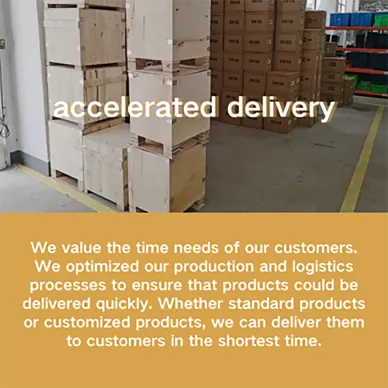portal crane
Understanding Portal Cranes An Essential Component of Modern Construction
In the world of construction and heavy lifting, portal cranes emerge as pivotal machinery that significantly enhances efficiency and productivity. A portal crane, also known as a gantry crane, is a type of crane that moves horizontally on rails and is often used in construction sites, docks, and warehouses, where heavy loads need to be lifted and transported with precision.
Structure and Functionality
Portal cranes are characterized by their distinctive A-frame structure, which provides stability and strength. The design typically consists of two vertical legs connected by a horizontal beam, allowing the crane to straddle over a workspace. This configuration not only increases lifting capacity but also provides a larger working area, enabling it to handle various materials such as steel, concrete, and shipping containers.
One of the remarkable features of portal cranes is their mobility. Many models are designed to operate on tracks, allowing them to move along predefined paths. This capability is crucial in large construction sites or ports, where materials need to be transferred over significant distances. Additionally, some modern portal cranes come equipped with electric or diesel motors that power both the lifting and horizontal movements, providing flexibility and operational efficiency.
Applications Across Industries
The versatility of portal cranes makes them indispensable across various industries. In construction, they are commonly used for lifting and relocating heavy materials, such as structural steel and precast concrete elements, which are integral in building frameworks. Their ability to operate in tight spaces and reach heights also makes them ideal for tall structures, ensuring that heavy components can be placed accurately and safely.
portal crane

In maritime operations, portal cranes play a crucial role in shipping and logistics. They are often employed at ports to load and unload shipping containers from vessels. Their high lifting capacity and reach allow them to handle multiple containers in a single operation, significantly reducing turnaround times for ships and enhancing overall port efficiency.
Moreover, in manufacturing facilities, portal cranes are essential for assembly lines and material handling processes. They facilitate the movement of heavy machinery and components, streamlining production workflows and minimizing the risk of injuries associated with manual handling.
Advantages of Portal Cranes
The advantages of portal cranes extend beyond their structural design and versatility. They offer significant safety benefits, as their stable construction reduces the risk of tipping during operations. Additionally, the remote operation capabilities allow operators to maintain a safe distance from the load, minimizing workplace accidents.
Economically, portal cranes contribute to cost savings in logistics and construction projects. By increasing the speed and efficiency of material handling, they help reduce labor costs and project timelines. Furthermore, their ability to function in adverse weather conditions makes them a reliable choice for outdoor construction and port operations.
Conclusion
In summary, portal cranes represent a critical element in the realm of heavy lifting and construction. Their robust design, efficiency, and versatility have made them integral to various industries, from construction sites to shipping ports. As technology continues to evolve, we can anticipate further advancements in portal crane designs, enhancing their capabilities and safety features. This evolution will undoubtedly contribute to more efficient construction practices and improved logistics, reaffirming the portal crane's status as a cornerstone of modern engineering and construction.
-
The Power of Trolley Cargo and Machinery Moving SolutionsNewsAug.22,2025
-
Exploring Magnetic Lifting Devices for Efficient Steel Plate HandlingNewsAug.22,2025
-
The Essential Guide to Portal CraneNewsAug.22,2025
-
Enhancing Efficiency in Permanent Magnetic LiftersNewsAug.22,2025
-
Heavy-Duty Machinery Movers and Material Handling SolutionsNewsAug.22,2025
-
The Comprehensive Guide to Adjustable Gantry CranesNewsAug.22,2025
-
The Ultimate Guide to Heavy Machinery Moving EquipmentNewsAug.04,2025
